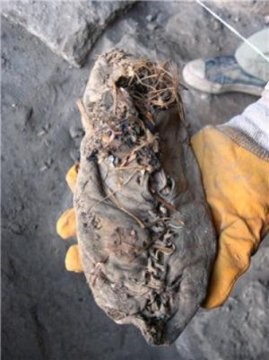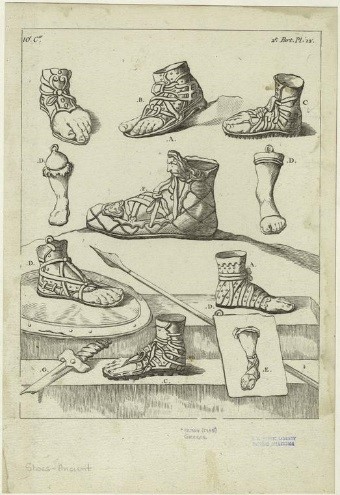Leathercraft: A Timeless Tradition

Today, we’re taking a look at a time honored tradition that dates back to an ancient age, but has never gone out of style: leather crafting. Nowadays, we often see leather when we look at our shoes, wallets, belts, and purses. Leather is so common that we forget it has been part of our history since before 50,000 BC.

Since the dawn of humanity, mankind has shown an aptitude for invention. When prehistoric man hunted for food, they realized that they could use more of the animal than just the meat. The hide could be turned into clothing and used for protection from the elements. With this idea came the birth of leather.
While evidence for hideworking and tanning exists from 400,000 years ago, the earliest confirmed leatherworking tools date back to the Stone Age in 5,000 BC. During this time, leather was used for shelters, clothing, and shoes. In Armenia, the oldest known pair of leather shoes were discovered, dating back to 3,500 BC. Despite looking far different from the shoes we wear today, our earliest ancestors realized the potential leather had for shoemaking.

Moving into the Bronze Age and the Iron Age, humans continued to find new uses for leather. Although still used in clothing and shoes, leather was also used to make protective shields and luxurious jewelry. Around the same time in Egypt, we find the first written references to leather, dating to 1,300 BC.
The Greeks and Romans in the 8th century used leather to combine practicality with style, fashioning popular sandals, handbags, and shields from it. The Romans found a host of new leather inventions, including belts, harnesses, saddles, and tents.
Throughout the Middle Ages and the Renaissance, leathercraft met a creative and artistic boom. Leather wasn’t just tanned, but painted, dyed, carved, shaped, stamped, and molded. During the Enlightenment, these techniques were further mastered, and people from this age created book covers, fancier shoes, aprons, hats, bags, furniture, and much more.
The introduction of machines in the Industrial Revolution transformed leather production, greatly speeding up the process. In 1858, a new tanning method came about: Chromium tanning. Using this method instead of the vegetable tanning method resulted in leather products that were softer and thinner.

Today, leather can be found across the globe in many colors, forms, and uses. At Ideal Tape, our shoe and leather goods products have serviced the leather market for decades, supporting shoes, handbags, wallets, belts, luggage, apparel, and more. We are proud to be a part of a universal market with such a long and rich history. As it continues to grow and evolve, we look forward to supporting the leather industry and playing our part in the future of fashion.


